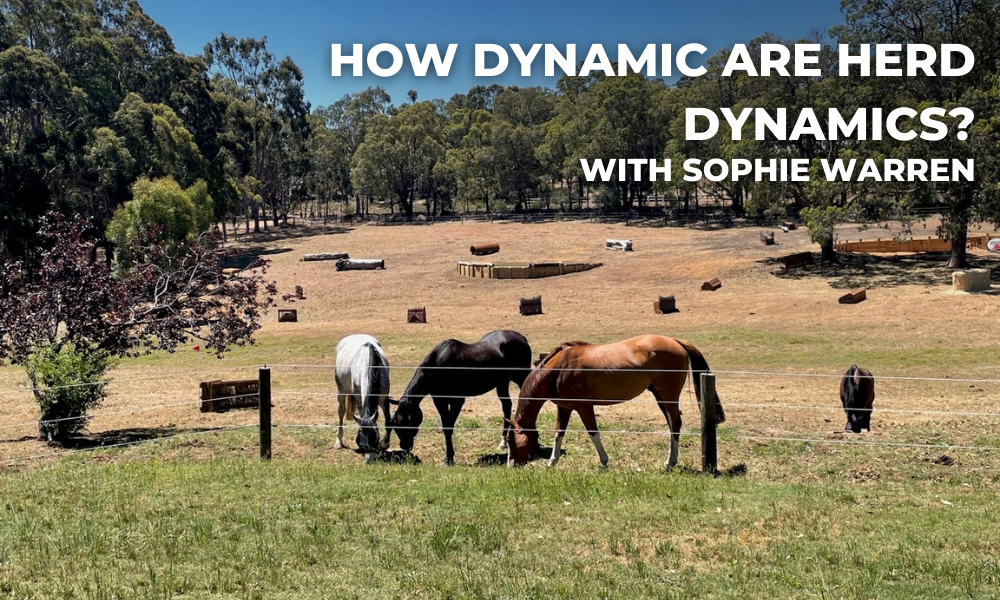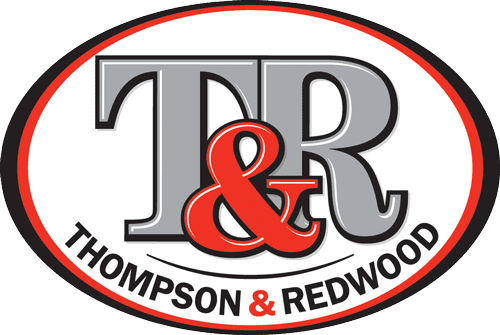
02 Mar How Dynamic are Herd Dynamics? – with Sophie Warren
By Sophie Warren, eventing rider, trainer and coach
How dynamic are herd dynamics for horses? Have you ever sat in a paddock with your horses and watched them interact with each other?
There is so much that we as humans don’t notice and whilst these days we talk about needing to be more “mindful”, the lack of observation in this department predates the 21st-century “busy-ness” that we all experience these days…there is just so much we don’t see!
Herd dynamics are incredibly fluid.
Herd dynamics are incredibly fluid. It is human nature to simplify things into systems and ideas that we can understand more easily. However equine herd dynamics just don’t fit in those boxes.
We like to think there will be a Boss Horse A, followed by the 2IC Boss Horse B, and then several subordinates until the “bottom of the pecking order”. In reality though, in the equine herd there is more likely to be: Boss-of-the-rolling-patch, Boss-of-the-water-trough, Boss-at-the-gate, Boss-at-feed-time and so on.
You’ll also notice that in the presence of Horse A, Horse B may be the boss of Horse C, while in the absence of Horse A, Horse C is actually the boss of Horse B….. confused yet?!
When we watch horses interact we see only the larger, more clunky signs of communication. When one or bites another, or kicks out, what has been lost to the human eye is the twitch of the ear, the movement in the nostril, the small twist of the neck and the swish of the tail that all proceeded the bite or kick.
The horse just had to escalate to the bite or kick to get his paddock buddy to finally hear what he was saying.


Horses NEED social bonds.
Horses NEED social bonds. They have evolved that way so it isn’t a case of it being “nice” for them or just something we provide in summer when we want to put them on spell.
Horses need social contact and social bonds in the same way they need space to move, shelter, food and water.
One of the most interesting things I have found is how a horse can be anxious in the yard or paddock (for example, waking the fence) despite having his or her “friend” in the yard next door. Pop them in the yard or paddock together and the horse will settle immediately.
“But won’t my horse then suffer separation anxiety when I take him or her to a show?” On the contrary, most horses suffer far less separation anxiety the more horses they live with and the more stable social bonds they have.
Interestingly, the same goes for horses that are field-shy or horse-shy (scared of other horses in the warm up). The larger the herd they live in the less field shy they become.
Obviously only ever put horses in a paddock together for the first time in a controlled way. We don’t just let them all out together and see what happens (especially if space is restricted). Make sure they know each other over the fence, put them together in various combinations of pairs first and then gradually increase the numbers.
Watch the dynamics and how they change. Most of all be careful at feed time and at the gate when bringing horses in and out of the yard when group housing – especially until the bonds and hierarchy are well established.


Horses don’t miss…
Horses don’t miss….so when they do have a bit of an argument and you think “gee it was lucky he didn’t get hit by that kick” you can rest assured that it was never intended to make contact or cause injury. Horses are so good at warning shots and they rarely want to cause injury. But they will make themselves heard.
More injuries are caused by fences and humans getting in the way of normal horse behaviour (whether directly at the time or indirectly by keeping horses isolated too much as youngsters etc) than by horse to horse contact itself.
To conclude…
It’s not for everyone, but I couldn’t imagine keeping my eventers any other way. As owners we have a duty to provide as much of the horse’s needs as we can. Their ethology tells us they need space to move (they walk up to 20km per day in the wild), lots of roughage so they can be chewing/grazing for 15-20 hours each day and social bonds/company, amongst other things.
We can’t provide it all perfectly but it gives me so much joy to look out of my house and see them all mooching around the paddock together.
It’s not often you see a retired 5 star horse, two 3 star horses, a 2 star horse, two 1 star horses and two 95 horses all in the paddock together and it’s a pleasure to see!





No Comments